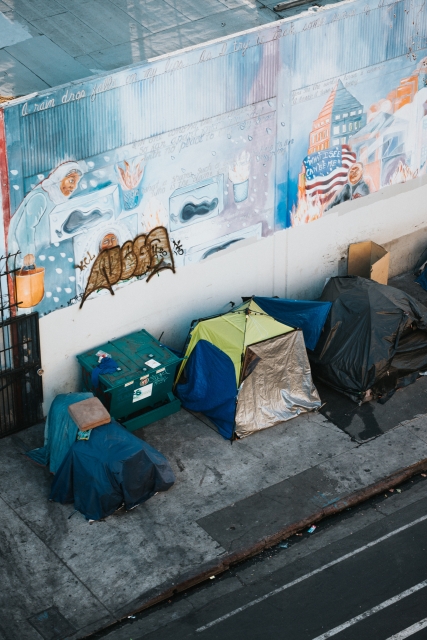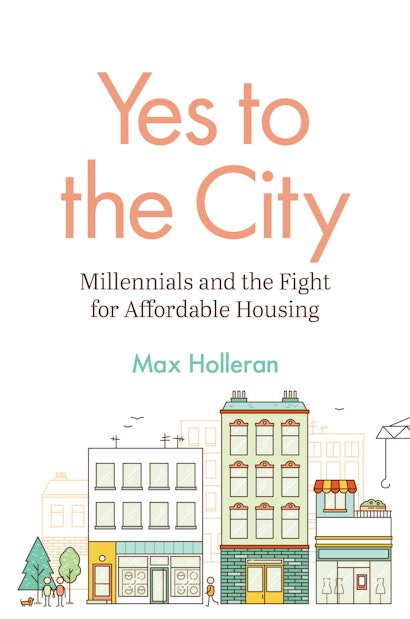If one searches the internet for the term “millennial” or “millennial generation,” the results are grim. Those born between 1980-2000 are declared to be unlucky, disillusioned, and poor amongst other negative attributes. American millennials may have been born into a strong economy and post-Cold War geopolitical certainty, but since then they have endured the War on Terror, the Great Recession, Covid, and a deterioration of democratic norms. They also have nowhere to live.
No single issue has catalyzed younger adults more than housing. Wealthier millennials cannot buy a home with the same ease their parents did, middle class millennials pay tremendous rents to live in cities with good economic opportunities, and the poor of the same cohort experience rampant housing insecurity: couch surfing, living in their cars, and, most disturbingly, sleeping in tent colonies or right on the pavement of cities like Los Angeles and New York.
Housing insecurity is felt viscerally, and it produces forceful and passionate activism. In the past decade, this fight has taken a unique form directed at building more units of housing and changing zoning laws to create denser cities. The ‘re-discovery’ of urban life and the pleasure of living in apartments by more affluent millennials is well known and has sparked intense debates about gentrification. But some people from this cohort believe that urban living is the solution not the problem. In particular, the dozens of housing activist groups organized under the banner of Yes in My Backyard (YIMBY) organize for the construction of new housing in successful and expensive US cities. They blame narrow-minded homeowners (who are often a generation older) for blocking new apartment buildings that could help relieve the housing crisis due to selfishness or not wanting new neighbors.
YIMBYism, which began in San Francisco eight years ago, is different from more traditional forms of housing activism that concentrate on people at risk of homelessness and residents of public housing. It is unabashedly middle class arguing that young professionals are also at risk of housing insecurity because prices have spiraled so far out of control. It does not advocate primarily public solutions of non-profit or state-managed housing but rather trusts in the laws of supply and demand, arguing that addressing the lack of market rate dwellings by erecting more apartments will ease prices for everyone (even those effectively excluded from the market which is a quickly growing number in places like San Jose and Seattle).
YIMBYs are not afraid of personalizing the fight to build more housing. They address planning permission at the neighborhood level, showing up to previously staid zoning meetings to chastise those who block construction. They use social media to call out their NIMBY foes and publicize the value of their homes to the world. Their rancorous presence online and off can feel like a family feud: urban professionals in their 30s steeped in Jane Jacobs lore and TED talks on New Urbanism eviscerate those in their parents’ generation worried that a new building will increase traffic or bring noisy neighbors.
The framing of housing as a generational issue makes it more tangible for some but it also obscures a lot. Millennials are not equally doomed when it comes to housing. Those most at risk are the poor: stagnant wages, trimmed benefits, and the failure to construct public housing has made younger adults in this group uniquely vulnerable. YIMBYs do not take this classic framing though: class is pushed aside in favor of age. On one hand, this is a canny framing for the activists that draws on the American myth of universal middle-classness. On the other hand, it is problematic for considering housing with the kind of public policy rigor that one might expect from a movement that is deeply attuned to urban planning details such as parking requirements, street setbacks, and cohabitation laws.
YIMBY activists have called for densification using market forces and their movement has caught on: eliminating single-family-only zoning ordinances in a number of cities, most notably Minneapolis. They also push for a broader cultural change. YIMBYism is explicitly anti-suburban in ways that transcend the countercultural critique of ‘ticky tacky little boxes.’ They insist that people have lost a capacity to live together and cooperate: Americans fortify their homes like besieged castles, they embrace gated communities, and they rarely get out of their cars. For millennial activists advocating density to add more units of housing there are ancillary arguments as well: people need to reacquaint themselves with their neighbors, walk more for health and mental wellbeing, and stop burning fuel that puts carbon in the atmosphere.
The coronavirus pandemic briefly challenged ideas about density and community at an existential level—given that proximity meant pathogens—but this experience has only bolstered the resolve of YIMBY activists to advocate for city life. For them, it is not just a matter of filling in new structures amongst the sprawling urban landscapes of American cities but getting people comfortable enough with each other again to share space.
Max Holleran is an Urban Studies Foundation Research Fellow and lecturer in sociology at the University of Melbourne. He is the author of Tourism, Urbanization, and the Evolving Periphery of the European Union. Twitter @maxholleran

